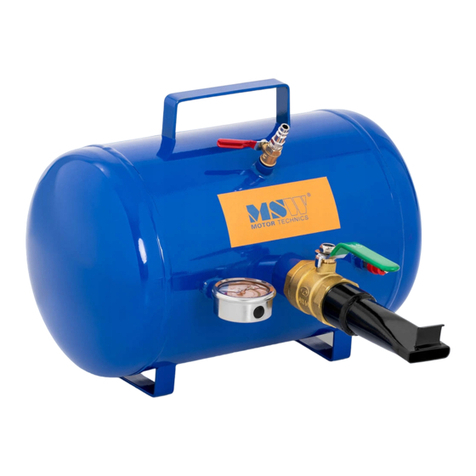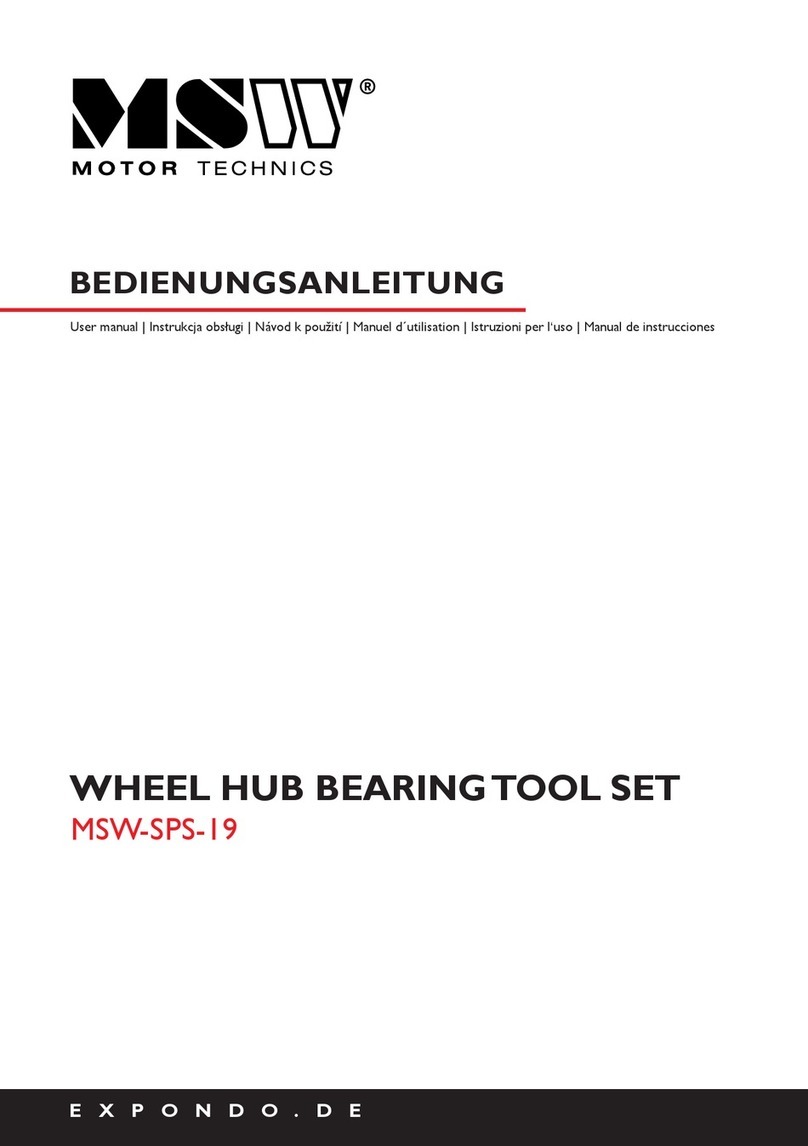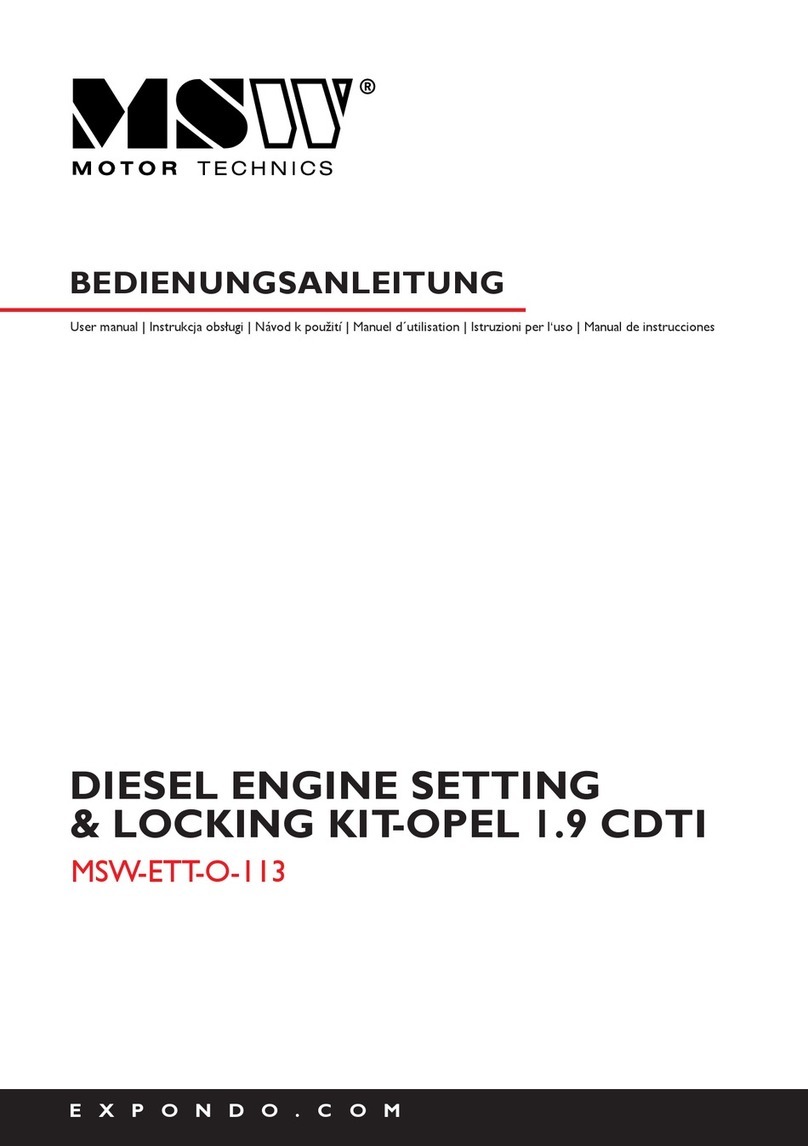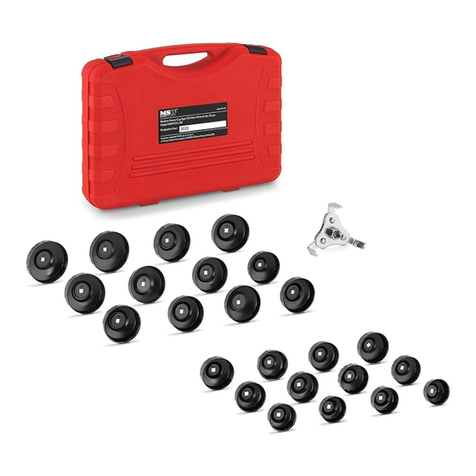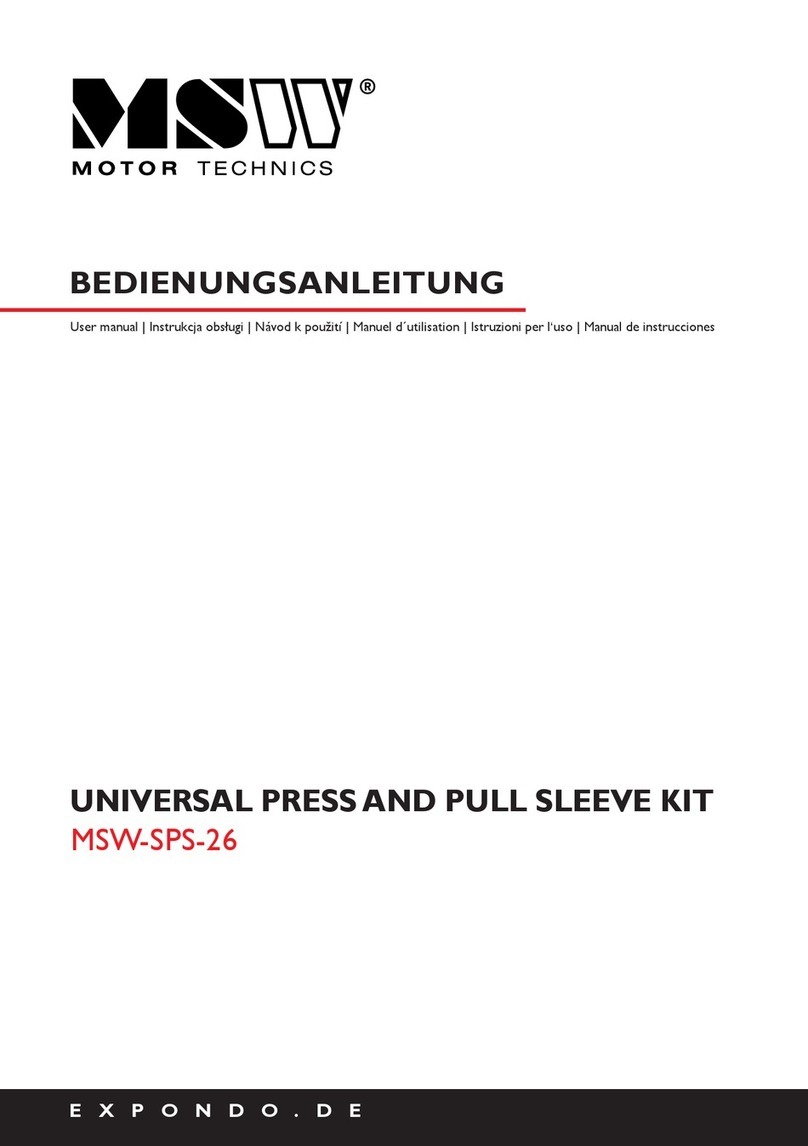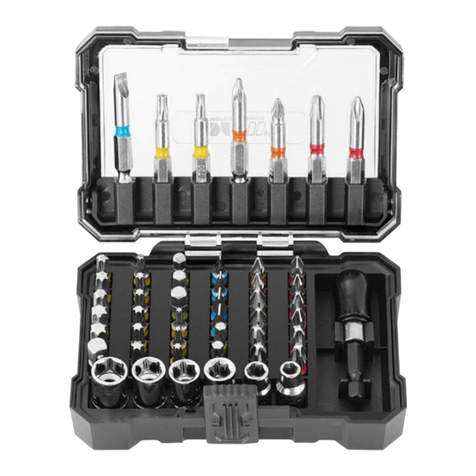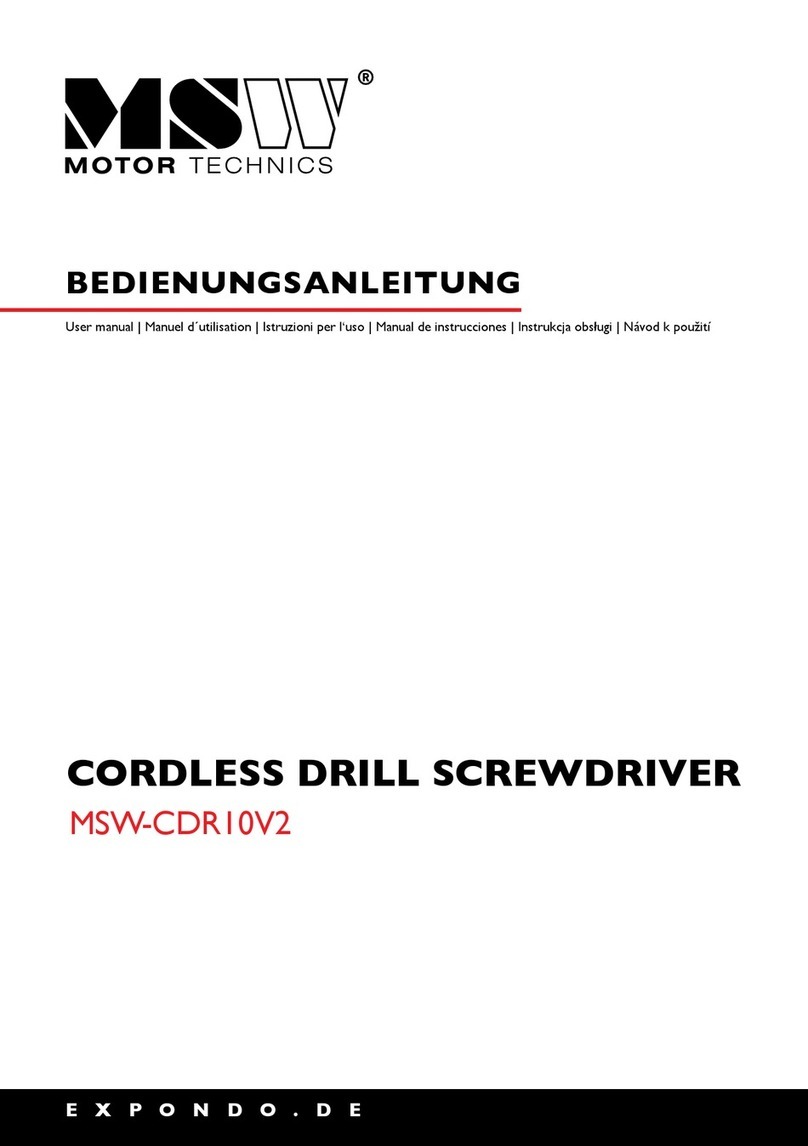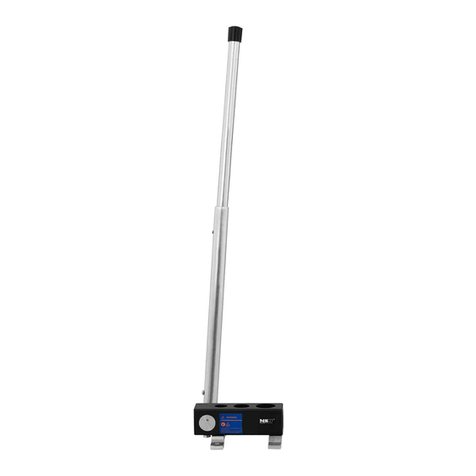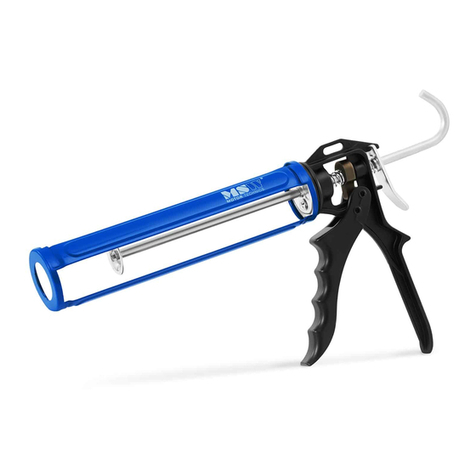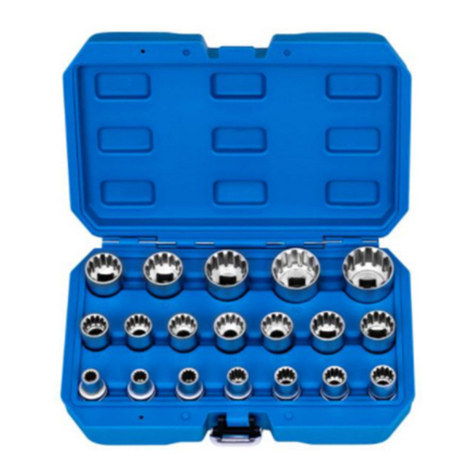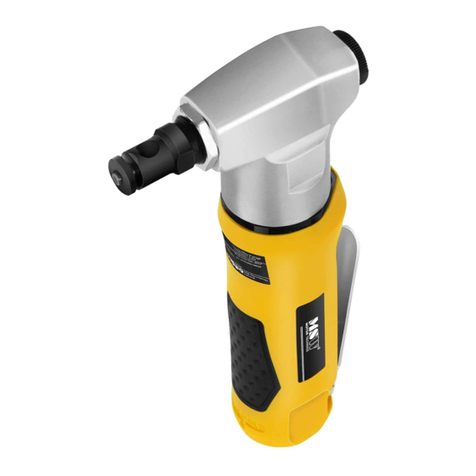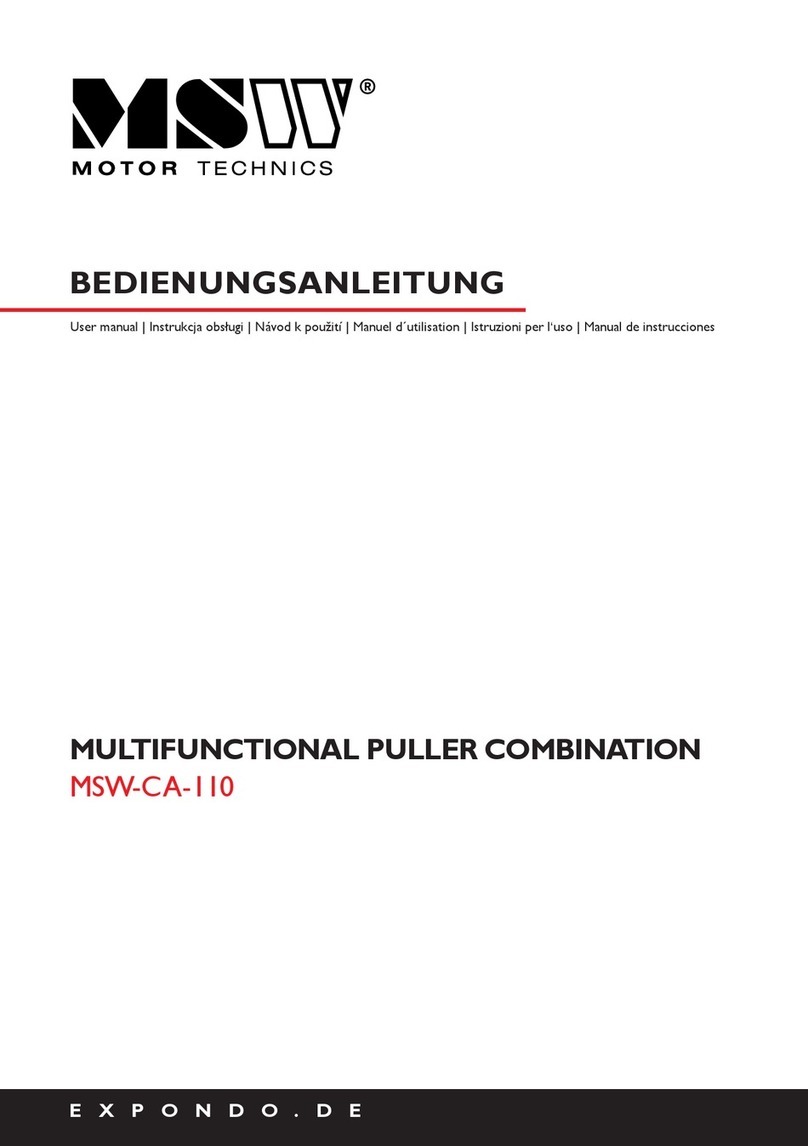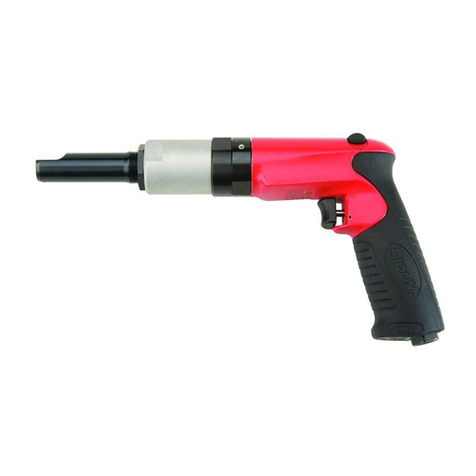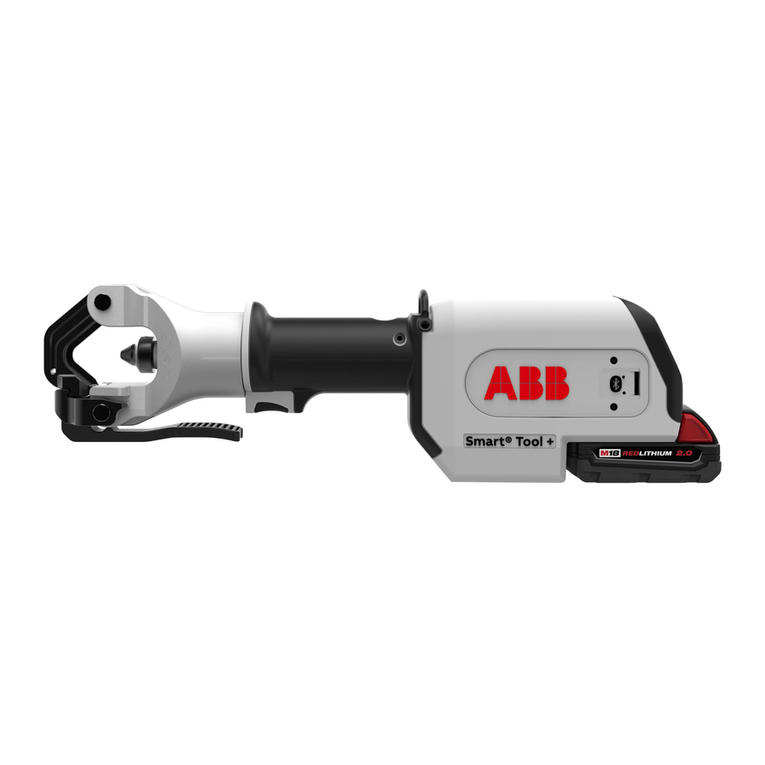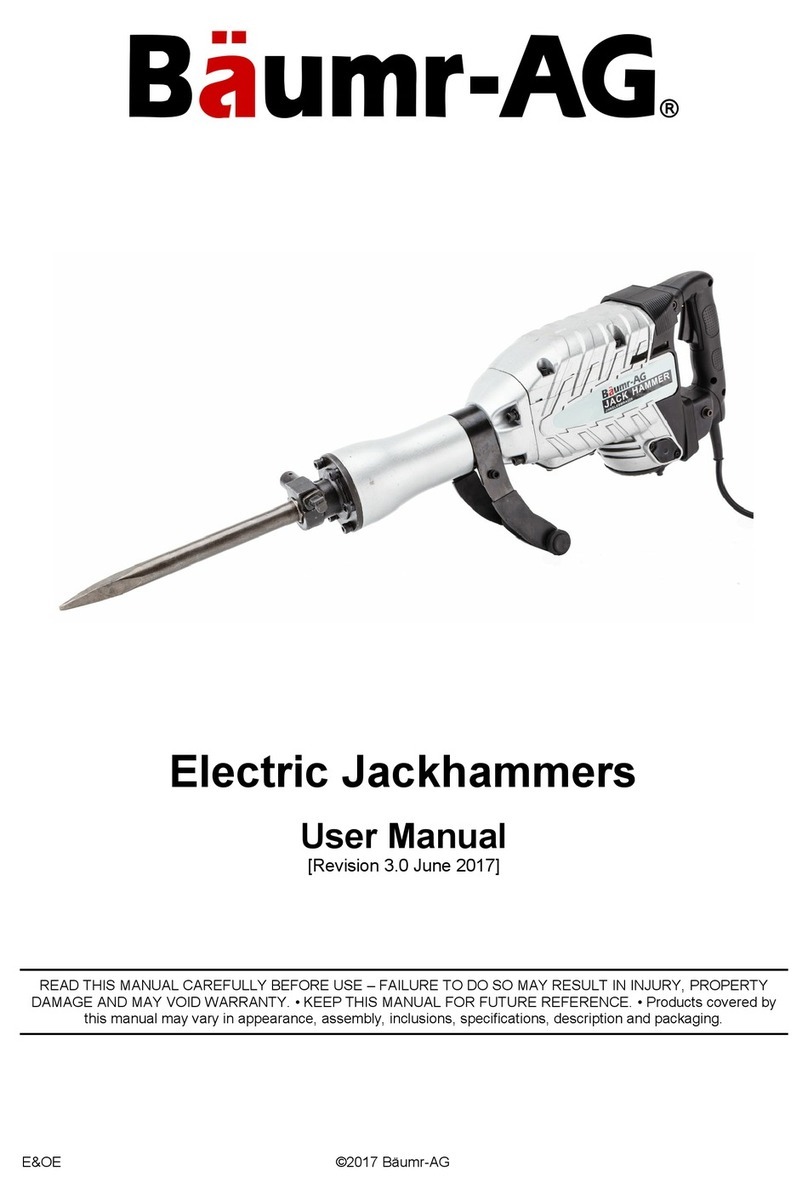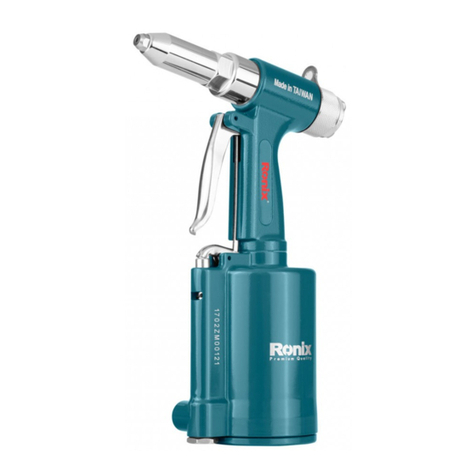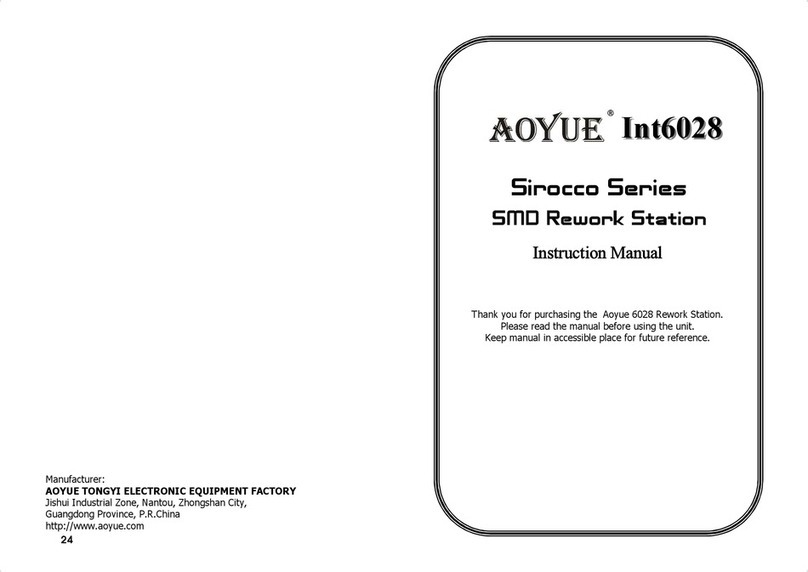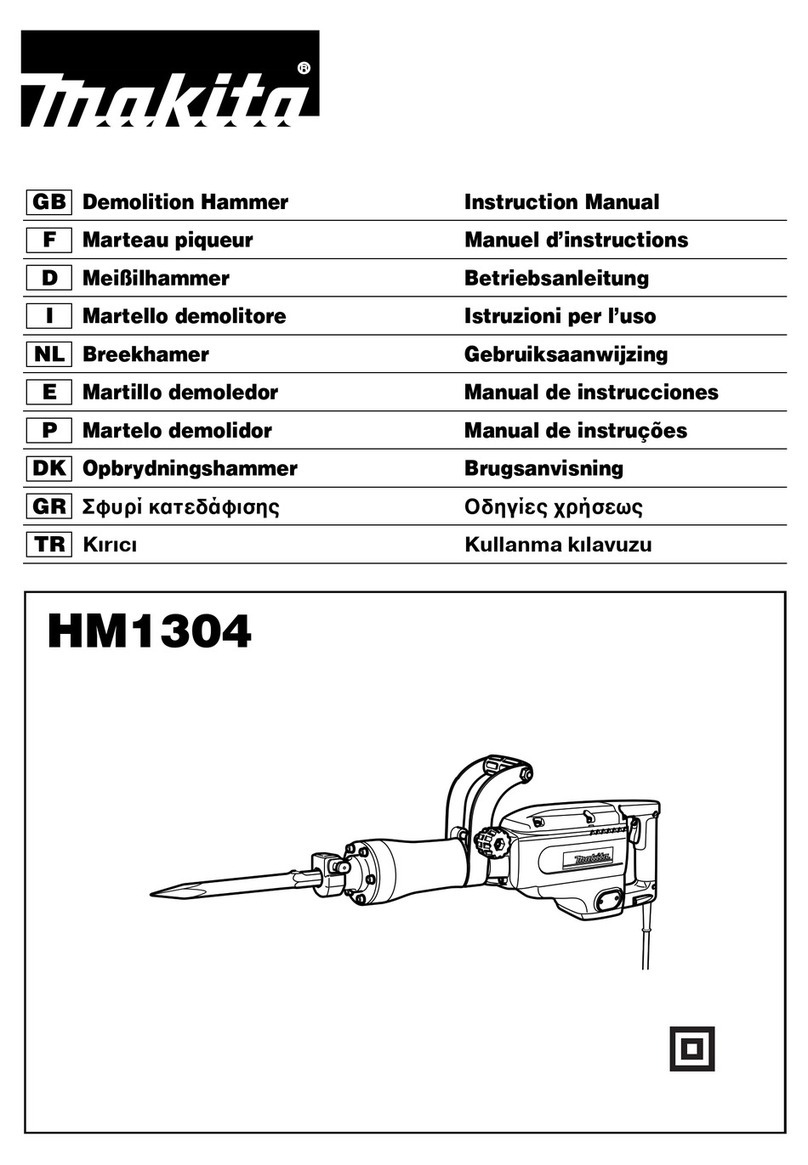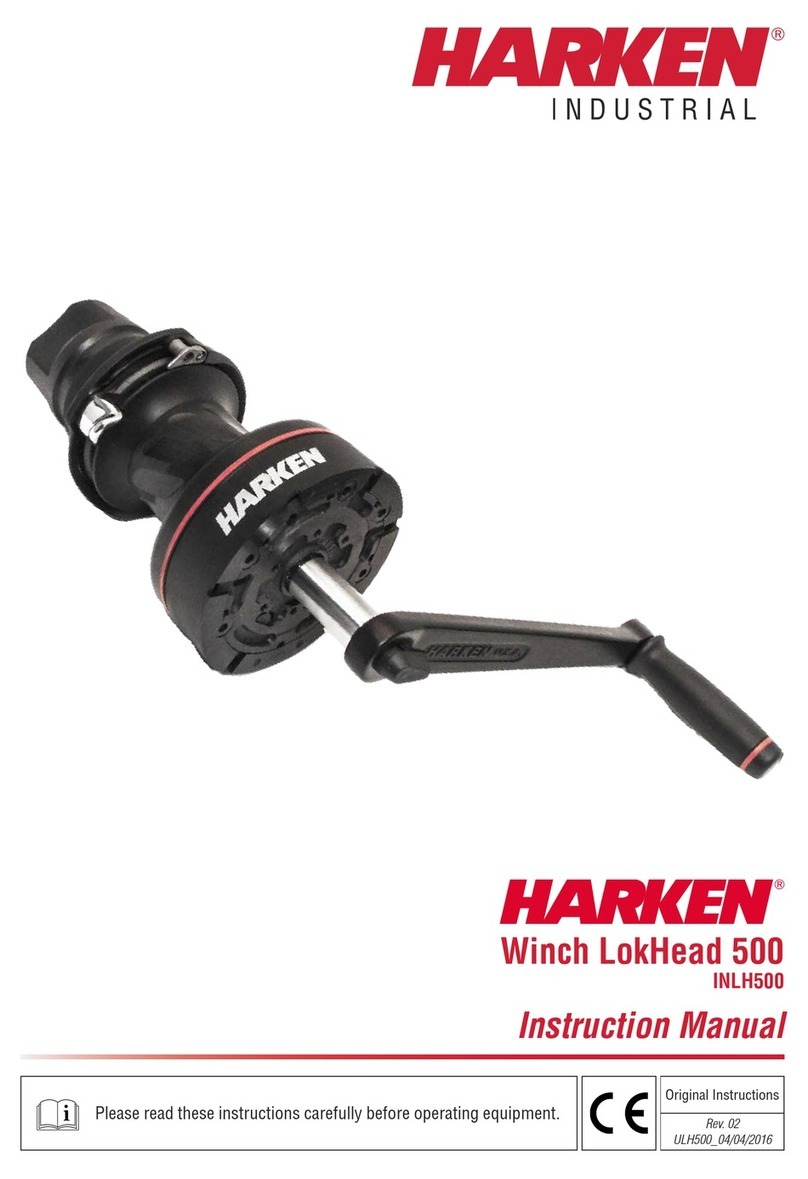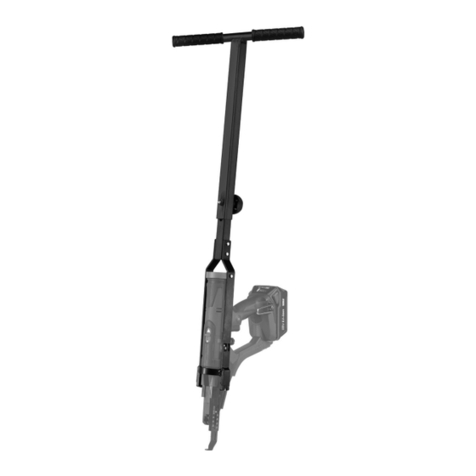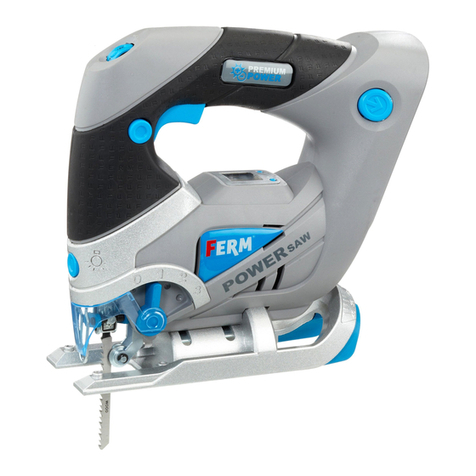
TECHNICAL DATA
The terms "device" or "product" are used in the warnings
and instructions to refer to PORTABLE SANDBLASTER.
2.1. SAFETY IN THE WORKPLACE
a) Make sure the workplace is clean and well lit. A messy
or poorly lit workplace may lead to accidents. Try
to think ahead, observe what is going on and use
common sense when working with the device.
b) If you discover damage or irregular operation,
immediately switch the device o and report it to a
supervisor without delay.
c) If there are any doubts as to the correct operation
of the device, contact the manufacturer's support
service.
d) Only the manufacturer's service point may repair the
device. Do not attempt any repairs independently!
e) Children or unauthorised persons are forbidden to
enter a work station. (A distraction may result in loss
of control over the device).
f) Reinforced hoses must be used in places particularly
threatening with damage.
g) Only connect and disconnect the pressure line when
the air valve is closed.
h) Do not point the pressure line towards yourself or
toward other people or animals.
i) Do not cut o the supply of compressed air by
crushing or bending pressure hoses.
j) When starting the device, increase the air supply
to the device gradually in order to ensure that it is
functioning properly. If you notice any abnormal
operation of the device, disconnect it immediately
from the compressed air and contact the
manufacturer's service point.
k) If this device is used together with another equipment,
the remaining instructions for use shall also be
followed.
Parameter description Parameter value
Product name PORTABLE
SANDBLASTER
Model MSW-MS40A
Tank dimensions (ØxH)
[mm] 310x450
Weight [kg] 13,75
Tank volume [l] 31
Operating pressure [bar] 4-8,6
Hos Length [m] 2,4
Air consumption [l/min] 170-708
2.2. PERSONAL SAFETY
a) Do not use the device when tired, ill or under the
inuence of alcohol, narcotics or medication which
can signicantly impair the ability to operate the
device.
b) When working with the device, use common sense
and stay alert. Temporary loss of concentration while
using the device may lead to serious injuries.
c) Use personal protective equipment as required
for working with the device, specied in section 1
(Legend). The use of correct and approved personal
protective equipment reduces the risk of injury.
d) To prevent the device from accidentally switching on,
make sure the switch is on the OFF position before
connecting to a power source.
e) Do not overestimate your abilities. When using the
device, keep your balance and remain stable at all
times. This will ensure better control over the device
in unexpected situations.
f) Do not wear loose clothing or jewellery. Keep hair,
clothes and gloves away from moving parts. Loose
clothing, jewellery or long hair may get caught in
moving parts.
8
g) Remove all adjusting tools or spanners before
turning the device on. A tool or spanner left in the
revolving part of the device may cause injury.
h) It is necessary to secure the workpiece, especially of
small size, against accidental displacement e.g. by
blocking it by means of a vice.
i) In the course of working with the device, dust is
generated that may contain harmful substances.
It is therefore necessary to use the device in a very
wellventilated room and to use a protective mask
with a lter.
2.3. SAFE DEVICE USE
a) Do not overload the device. Use the appropriate
tools for the given task. A correctly-selected device
will perform the task for which it was designed better
and in a safer manner.
b) Make sure the plug is disconnected from the socket
before attempting any adjustments, accessory
replacements or before putting the device aside.
Such precautions will reduce the risk of accidentally
activating the device.
c) When not in use, store in a safe place, away from
children and people not familiar with the device who
have not read the user manual. The device may pose
a hazard in the hands of inexperienced users.
d) Keep the device in perfect technical condition. Before
each use check for general damage and especially
check for cracked parts or elements and for any other
conditions which may impact the safe operation of
the device. If damage is discovered, hand over the
device for repair before use.
e) Keep the device out of the reach of children.
f) Device repair or maintenance should be carried out
by qualied persons, only using original spare parts.
This will ensure safe use.
g) To ensure the operational integrity of the device, do
not remove factory-tted guards and do not loosen
any screws.
h) When transporting and handling the device between
the warehouse and the destination, observe the
occupational health and safety principles for manual
transport operations which apply in the country
where the device will be used.
i) Avoid situations where the device stops working
during use due to excessive loading. This may result
in overheating of the drive elements and damage to
the device.
j) Do not touch articulated parts or accessories unless
the device has been disconnected from the power
source.
k) Do not carry or hang the device by the pressure line.
l) Maintenance activities and replacement of hoses,
nozzles, etc. must be carried out only and exclusively
when the compressed air supply is switched o and
the tank is emptied from pressure.
m) Only air should be used to supply the unit, it is
forbidden to use other gases.
n) It is necessary to transport the device in a vertical
position.
o) Only sandblasting materials specially designed
for sandblasters may be used with this device. It is
forbidden to use ordinary sand!
p) Whenever the device is transported or not in use, it
is necessary to reduce the pressure in the sand tank.
The pressure gauge should indicate the value of 0
9
1. Tank
2. Wheel
3. Fastener
4. Support
5. Axle of wheels
6. Transport grip
7. Handle of grip
8. Screw
9. Nut
10. Washer
11. Safety valve
12. Gasket
13. Closure for sand pouring
14. Tube
15. Three-way-adapter
16. Manometer
17. Two-sided nipple
18. Air dehumidier
19. Main air valve 3/8 ''
19A. 3/8 "throttle valve
19B. Sandblasting line valve
20. Male-female connector
21. Two-sided nipple
22. Air hose
23. Sand outlet pipe
24. Clamping band
25. Sandblasting line
26. Nipple
27. Gasket
28. Ceramic nozzle
29. Front nut
30. Washer
31. Funnel
32. Cowl
33. Dead man’s trigger
34. Release
35. The adapter of a dead man’s trigger
36. Sealing block
The cowl (32) is not a respiratory protection and does not
replace a dust mask.
1. GENERAL DESCRIPTION
The user manual is designed to assist in the safe and
trouble-free use of the device. The product is designed
and manufactured in accordance with strict technical
guidelines, using state-of-the-art technologies and
components. Additionally, it is produced in compliance
with the most stringent quality standards.
DO NOT USE THE DEVICE UNLESS YOU HAVE
THOROUGHLY READ AND UNDERSTOOD THIS
USER MANUAL.
To increase the product life of the device and to ensure
trouble-free operation, use it in accordance with this user
manual and regularly perform maintenance tasks. The
technical data and specications in this user manual are
up to date. The manufacturer reserves the right to make
changes associated with quality improvement. The device
is designed to reduce noise emission risks to a minimum,
taking into account technological progress and noise
reduction opportunities.
LEGEND
The product satises the relevant safety
standards.
Read the instructions before use.
The product must be recycled.
Use ear protection. Exposure to loud noise may
result in hearing loss.
Wear protective goggles.
Wear a dust mask (respiratory tract protection).
Wear protective gloves.
Wear foot protection.
PLEASE NOTE! The drawings in this manual are for
illustration purposes only and in some details may
dier from the actual machine.
The original operation manual is in German. Other
language versions are translations from German.
2. USAGE SAFETY
ATTENTION! Read all safety warnings and all
instructions. Failure to follow the warnings and
instructions may result in an electric shock, re and/
or serious injury or even death.
REMEMBER! When using the device, protect children
and other bystanders.
3. USE GUIDELINES
The portable sandblaster is a device designed to clean
various kinds of surfaces from rust, impurities, etc. by means
of a stream of compressed air with particles of abrasive
material intended for sandblasting.
The user is liable for any damage resulting from
unintended use of the device.
3.1. DEVICE DESCRIPTION
ATTENTION! Despite the safe design of the device
and its protective features, and despite the use of
additional elements protecting the operator, there is still
a slight risk of accident or injury when using the device.
Stay alert and use common sense when using the device.
ATTENTION! This product‘s view can be found on the
last pages of the operating instructions (pp. 43).
Rev. 15.06.2020
Rev. 15.06.2020
EN
USER MANUAL
EN

